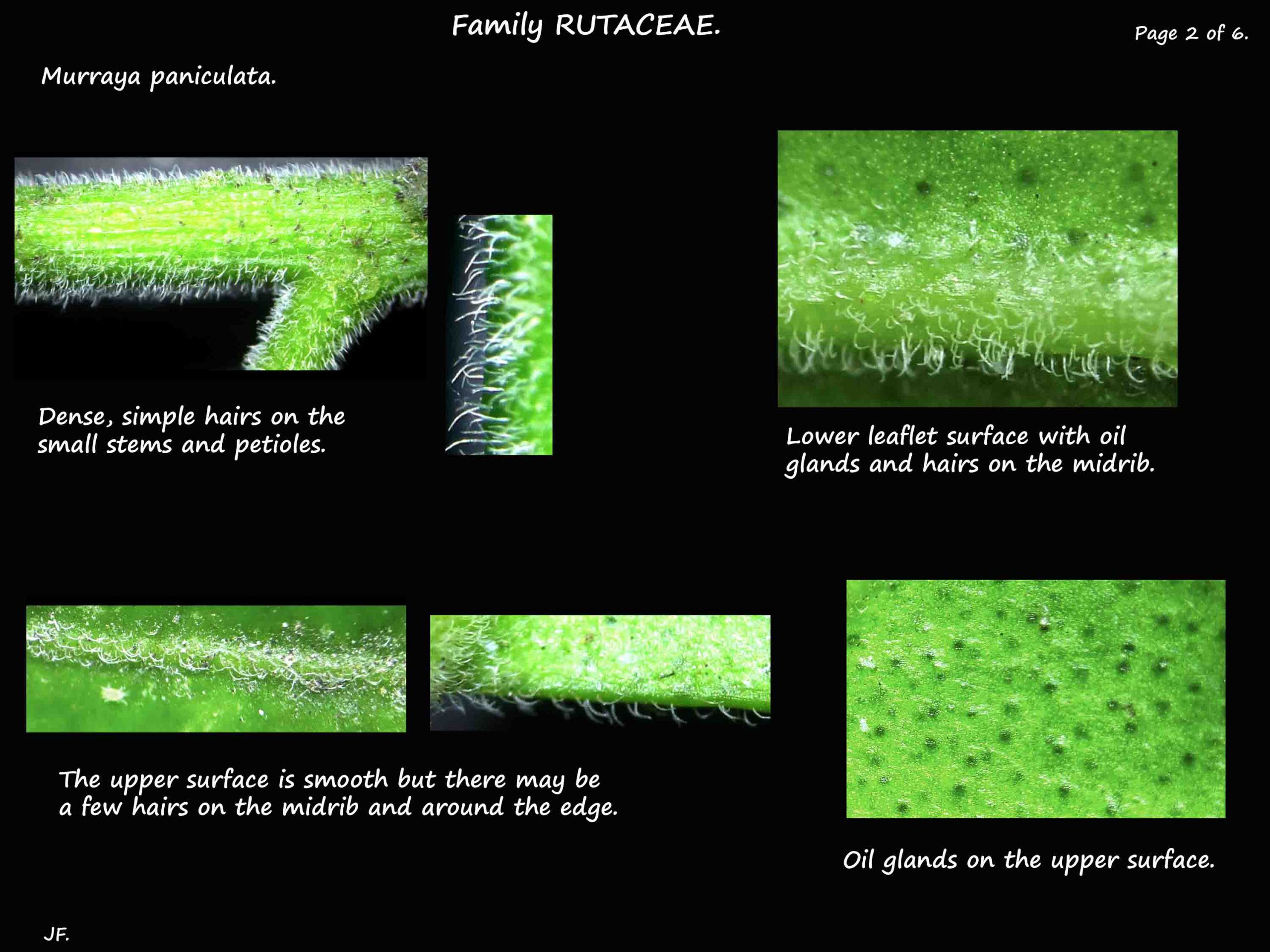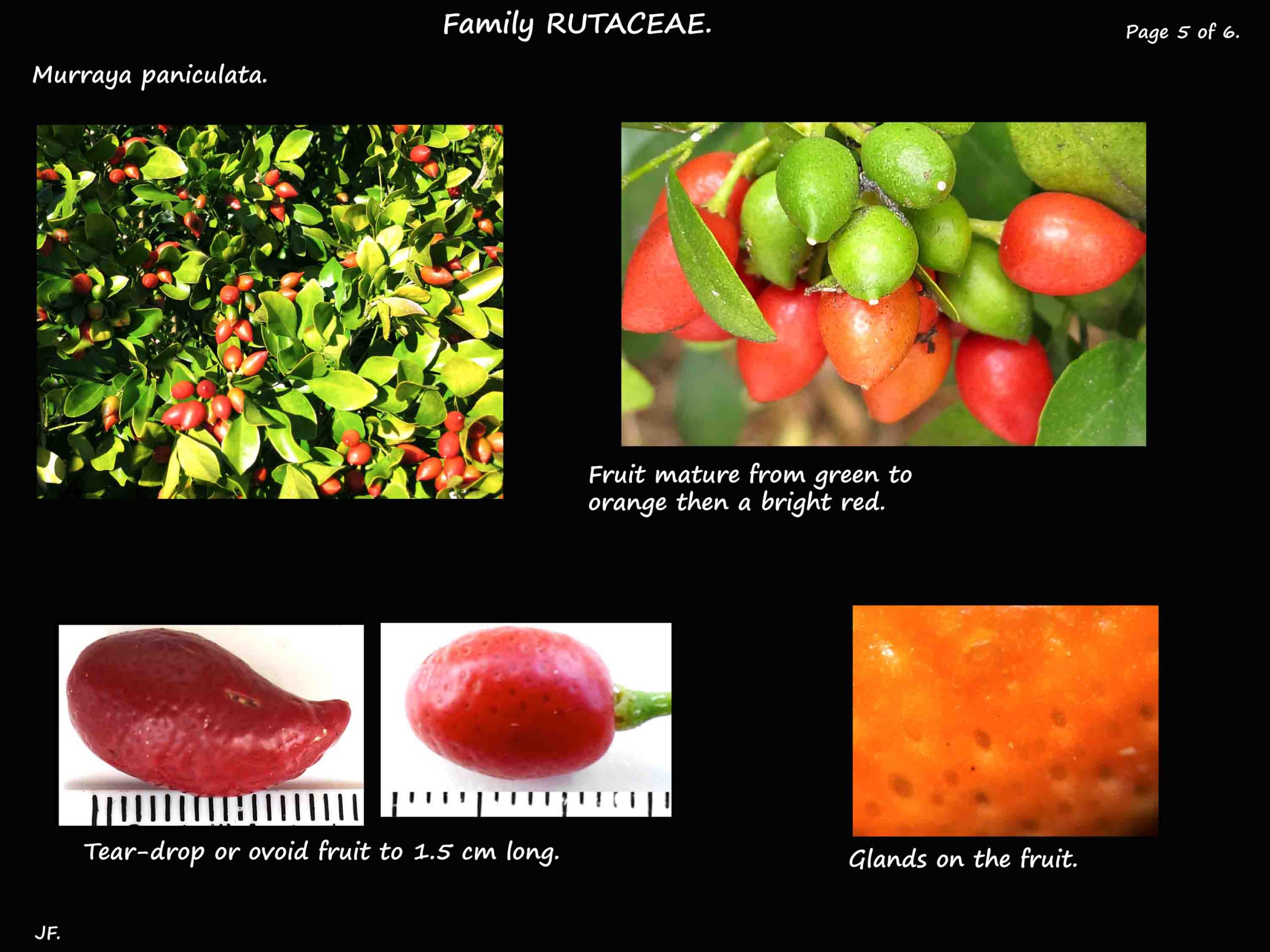Murraya paniculata.
Family Rutaceae > Subfamily Aurantioideae > Tribe Clauseneae.
They are native to the China, India and Asia region with a variety native to Queensland.
The plants commonly seen in gardens are from Asia and known as M. paniculata ‘Exotica’.
They are now a weed in many areas.
The native Murraya paniculata has smaller leaflets (2 – 4 cm long) than the exotic ones.
Mock Orange grows as a dense, evergreen shrub around 3 m high or a tree to 6 m.
Young green stems may be smooth or have small hairs while older stems are greyish-brown.
The glossy, dark green leaves are alternately arranged in a spiral.
They are up to 12 cm long and pinnately divided with 3 to 9 leaflets.
The leaflets are on petioles that have tiny hairs.
Leaflets are ovate to narrowly eliptic to obovate (widest above the centre).
They are 3 to 7 or 8 cm long with the lower ones smaller.
The tip tapers to a point with the sides straight or curved inwards.
The base is wedge-shaped and may be oblique and the edge is smooth or slightly toothed.
They are covered in oil glands and have a citrus smell when crushed.
Inflorescences, terminal or in the near terminal axils, have up to 8 flowers.
The scented, white flowers become cream as they age.
Shrubs flower a few times a year especially after rain.
There are 5 green, minutely hairy sepals with large oil glands.
There are 5 oblong petals, around 1 to 2 cm long, that curl backwards.
There are 10 stamens with 5 shorter than the others.
There are no hairs on the anthers.
The superior ovary has a globular stigma on the thick style.
The ovoid to ellipsoidal fruit, 1- 1.5 cm long, ripen from green to orange or red.
Each has 1 or 2 densely hairy seeds 6 or 7 mm long.
The dwarf variety M. paniculata Min-a-min grows to 1 m.
J.F.







